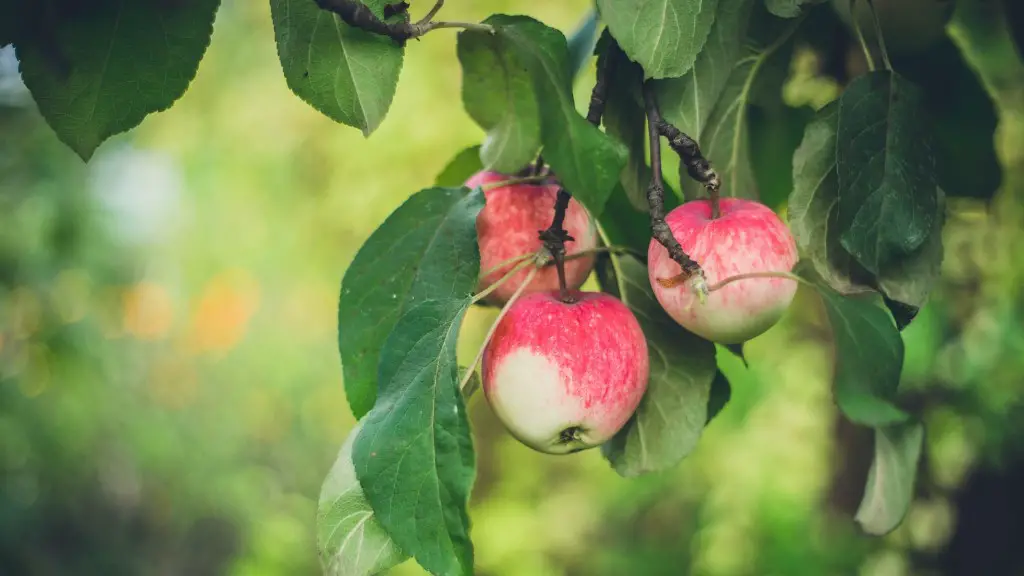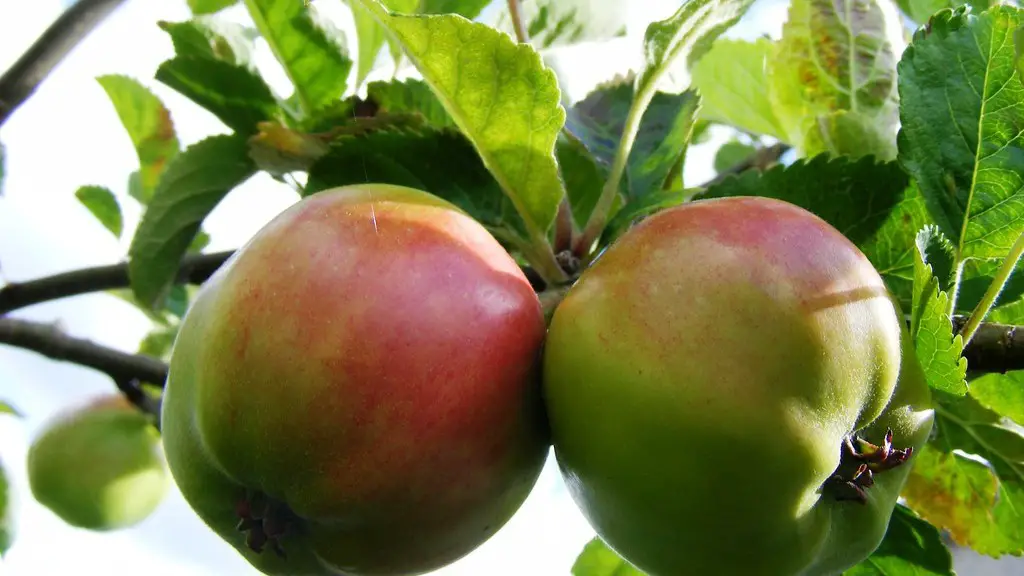A dwarf apple tree is a great addition to any garden, but how much does it cost? Fortunately, there’s no definitive answer to this question as the price of a dwarf apple tree varies dramatically depending on type, size, and variety. Generally speaking, dwarf apple trees range anywhere between $50 and $200, with some higher-end varieties costing much more.
At its most basic level, a dwarf apple tree consists of a rootstock, a young tree around 18 inches tall, and a nursery-propagated variety grafted onto it. The rootstock affects the tree’s overall size and root characteristics, while the variety grafted onto it determines its productivity and its range of characteristics from season to season. Generally, the more complex a tree’s rootstock and variety, the more expensive it will be.
Aside from the rootstock and variety, the size of the tree you’re buying is another factor in price. For example, a 1-year-old dwarf apple tree may cost as little as $50, while a fully mature 5-year-old tree might cost several times that amount. In general, it’s best to buy a 1-year-old tree, as they are often less prone to disease, and they cost the least since they are the smallest. However, if you are looking for a more immediate harvest, a fully matured 5-year-old tree might be a better option.
Other aspects to consider when pricing a dwarf apple tree include potential shipping costs, as well as any additional fees. Some nurseries and garden centers charge a fee to ship a tree, while others may offer free shipping. It’s also important to consider any additional fees that might be associated with purchasing a dwarf apple tree from a particular nursery, such as a markup fee or even a membership fee. In any case, it’s best to compare the prices of different nurseries before making a decision.
Finally, it’s important to consider the quality of the tree you’re buying. Poorly grown trees are generally more susceptible to disease and pest infestations, which can be costly to address in the long run. Look for a supplier that offers certified organic and Guaranteed True to Variety Apple Trees, as these are generally grown in the best conditions and offer the best value for the money.
Planting and Care
Planting a dwarf apple tree can be tricky, as it requires the right soil, location, and ongoing care. First and foremost, it’s important to make sure the tree is planted in a well-draining area and not in a soggy soil location. Next, it’s essential to provide adequate water and fertilizer to the tree, as it requires additional energy to establish its roots and fruit production. It is also important to be aware that the tree needs to be pruned and thinned regularly to ensure healthy growth and fruit production.
In addition to regular pruning and thinning, it’s also important to pay attention to insect and disease control. Due to its smaller size, a dwarf apple tree is more susceptible to damage and infestation, so it’s important to regularly inspect the tree for pests and diseases and take the necessary steps to protect it. Finally, dwarf apple trees are much shorter in stature than their traditional counterparts, so they may require some extra support when fruit is present to keep them upright and prevent them from breaking branches due to the fruit’s weight.
Harvest
When it comes to harvesting, dwarf apple trees do not bear fruit as quickly as other apple varieties, but they are generally ready for harvest within two to five years after planting. Depending on the variety, apples can be ready to harvest from late summer to early fall. Generally, the harvest signals the end of the tree’s growing season, and from then on it needs to be pruned and maintained in order to ensure the future success of the tree.
When harvesting apples from a dwarf apple tree, it’s important to be gentle and avoid breaking any of the branches. Apples should be harvested in the morning or late afternoon so they don’t overheat and spoil quickly in the sun. Once harvested, the apples can be stored in a cool, dark area to be enjoyed at a later date.
Pruning and Maintenance
Pruning and maintenance are essential parts of caring for any dwarf apple tree. Properly pruned and maintained trees are better able to tolerate pests and diseases, and they also produce more consistent and high-quality harvests each season. When pruning a dwarf apple tree, it’s important to start by removing all dead, diseased, and damaged branches. Next, prune off any overly dense branches that are crowding too many fruits, as this can lead to poor quality fruit.
After pruning, it’s important to make sure the tree is fitted with the proper supports and stakes to ensure stability during the growing season. Dwarf apple trees can be more susceptible to wind and weather damage due to their smaller size, so it’s important to provide the necessary supports for them to survive. Finally, it’s essential to continue pruning and shaping the tree each year to keep its shape and maintain its growth. This is also the time to apply fertilizers and other nutrients that can help the tree remain healthy and productive.
Varieties
There is a wide range of dwarf apple trees available, ranging from classic favorites like Red Delicious to newly developed and more disease resistant varieties like Honeycrisp. It’s important to consider the specific needs of your garden and your taste preferences when selecting a variety. Consider your climate and the pests and diseases that are most common in your area, as this is important in determining which varieties will do best in your garden.
For example, if you live in an area with a lot of frost, it might be best to choose a variety that is more frost-resistant. Additionally, for areas prone to disease, modern varieties such as Honeycrisp that are disease and pest resistant might be a better choice. Whatever variety you choose, it’s essential to do your research, read up on the tree’s specific requirements, and make sure you provide it with the proper care.
Conclusion
In conclusion, the cost of a dwarf apple tree can vary dramatically depending on type, size, and variety. Generally, they range anywhere between $50 and $200, with some higher-end varieties costing much more. When choosing a dwarf apple tree, it’s important to consider the size, quality, shipping costs, and potential additional fees, as well as the variety itself. Proper care and maintenance is also essential for producing healthy, high-quality fruit harvests each season. No matter what variety you choose, a dwarf apple tree is a great addition to any garden.

